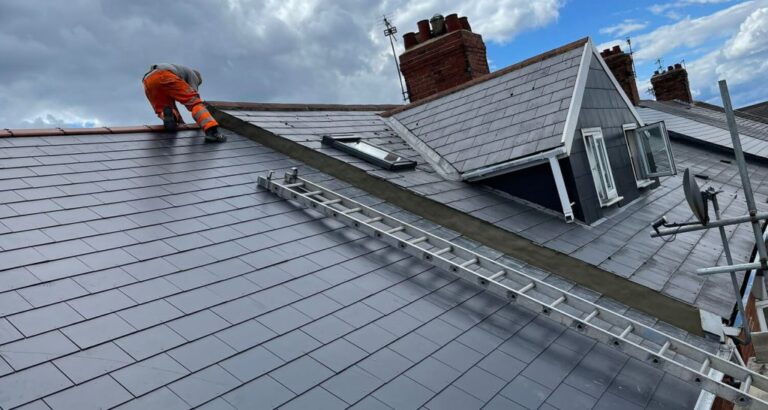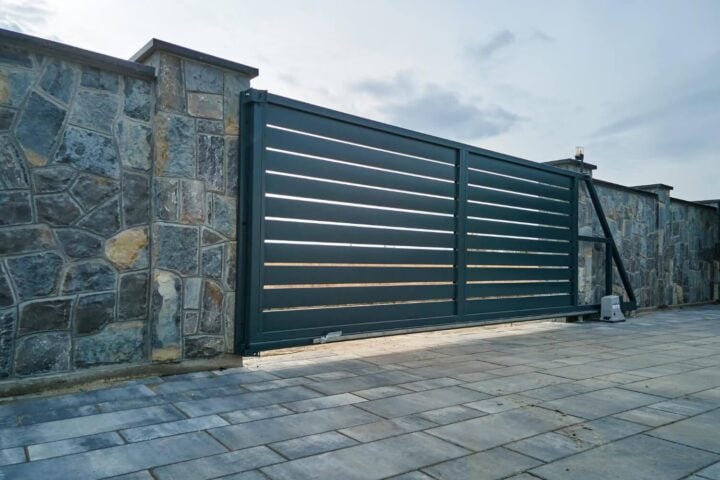“Transform your home, transform the planet: Embrace green living with eco-friendly home improvement ideas.”
Green living refers to adopting practices and making choices that are environmentally friendly and sustainable. One area where individuals can make a significant impact is through eco-friendly home improvement ideas. By implementing these ideas, homeowners can reduce their carbon footprint, conserve energy and water, and create a healthier living environment for themselves and future generations. In this article, we will explore various eco-friendly home improvement ideas that can help individuals embrace green living and contribute to a more sustainable future.
Sustainable Materials for Home Renovation Projects
Sustainable Materials for Home Renovation Projects
When it comes to home renovation projects, choosing sustainable materials is an excellent way to make your home more eco-friendly. Sustainable materials are those that are sourced and manufactured in a way that minimizes their impact on the environment. By using these materials, you can reduce your carbon footprint and create a healthier living space for you and your family.
One popular sustainable material for home renovation projects is bamboo. Bamboo is a fast-growing grass that can be harvested and regrown within a few years, making it a highly renewable resource. It is also incredibly durable and can be used for a variety of purposes, such as flooring, countertops, and even furniture. Bamboo is not only eco-friendly but also adds a touch of natural beauty to any home.
Another sustainable material to consider is reclaimed wood. Reclaimed wood is salvaged from old buildings, barns, or other structures that are no longer in use. By using reclaimed wood, you are giving new life to materials that would otherwise end up in a landfill. Reclaimed wood has a unique character and charm that cannot be replicated with new wood. It can be used for flooring, wall paneling, or even furniture, adding a rustic and sustainable touch to your home.
Recycled glass is also a fantastic sustainable material for home renovation projects. Glass can be recycled indefinitely without losing its quality, making it an excellent choice for countertops, tiles, or even decorative accents. Using recycled glass not only reduces the demand for new glass production but also helps to divert waste from landfills. It adds a touch of elegance and uniqueness to your home while being environmentally friendly.
If you are considering replacing your old carpet, consider using natural fibers such as wool or sisal. Wool is a renewable resource that is biodegradable and has excellent insulation properties. It is also naturally resistant to stains and fire, making it a safe and sustainable choice for flooring. Sisal, on the other hand, is made from the fibers of the agave plant and is known for its durability and natural beauty. Both wool and sisal carpets are eco-friendly alternatives to synthetic carpets and can add warmth and texture to your home.
For those looking to update their kitchen or bathroom, consider using recycled or sustainable materials for countertops. Materials such as recycled paper, concrete, or even recycled plastic can be transformed into beautiful and durable countertops. These materials not only reduce the demand for new resources but also help to divert waste from landfills. They are easy to maintain and can add a modern and eco-friendly touch to your home.
In conclusion, choosing sustainable materials for home renovation projects is a great way to make your home more eco-friendly. Bamboo, reclaimed wood, recycled glass, natural fibers, and recycled countertops are just a few examples of sustainable materials that can be used in various ways throughout your home. By using these materials, you can reduce your carbon footprint and create a healthier living space for you and your family. So, the next time you embark on a home renovation project, consider incorporating sustainable materials into your design.
Energy-Efficient Appliances and Lighting for a Greener Home
Energy-Efficient Appliances and Lighting for a Greener Home
In today’s world, where environmental concerns are at the forefront of our minds, it is essential to make conscious choices that contribute to a greener and more sustainable future. One area where we can make a significant impact is in our homes. By adopting energy-efficient appliances and lighting, we can reduce our carbon footprint and save money on our energy bills.
When it comes to appliances, it is crucial to choose those that have earned the ENERGY STAR label. This label indicates that the appliance meets strict energy efficiency guidelines set by the U.S. Environmental Protection Agency (EPA). ENERGY STAR appliances, such as refrigerators, dishwashers, and washing machines, use significantly less energy than their conventional counterparts. By replacing old, energy-guzzling appliances with ENERGY STAR models, you can reduce your energy consumption by up to 50%.
In addition to choosing energy-efficient appliances, it is also essential to consider your lighting choices. Traditional incandescent light bulbs are highly inefficient, converting only 10% of the energy they consume into light, while the rest is wasted as heat. By switching to energy-efficient lighting options, such as compact fluorescent lamps (CFLs) or light-emitting diodes (LEDs), you can significantly reduce your energy consumption and extend the lifespan of your bulbs.
CFLs are a popular choice for energy-efficient lighting. They use about 75% less energy than incandescent bulbs and can last up to ten times longer. Although CFLs are more expensive upfront, their long lifespan and energy savings make them a cost-effective choice in the long run. Additionally, CFLs produce less heat, reducing the strain on your cooling system during the summer months.
LEDs are another excellent option for energy-efficient lighting. They use even less energy than CFLs and have an incredibly long lifespan, often lasting up to 25 times longer than traditional incandescent bulbs. LEDs are also more durable and resistant to breakage, making them a safer choice for households with children or pets. While LEDs may have a higher upfront cost, their energy savings and longevity make them a worthwhile investment.
To maximize the energy efficiency of your lighting, consider installing dimmer switches and motion sensors. Dimmer switches allow you to adjust the brightness of your lights according to your needs, reducing energy consumption. Motion sensors are particularly useful in areas where lights are often left on unintentionally, such as hallways or bathrooms. These sensors detect movement and automatically turn off the lights when no one is present, saving energy and reducing your carbon footprint.
In conclusion, adopting energy-efficient appliances and lighting is a crucial step towards creating a greener home. By choosing ENERGY STAR appliances, you can significantly reduce your energy consumption and save money on your energy bills. Similarly, by switching to energy-efficient lighting options like CFLs or LEDs, you can reduce your carbon footprint and extend the lifespan of your bulbs. Additionally, installing dimmer switches and motion sensors can further enhance the energy efficiency of your lighting. By making these simple changes, you can contribute to a more sustainable future while enjoying the benefits of lower energy costs.In conclusion, implementing eco-friendly home improvement ideas is crucial for promoting green living. By adopting sustainable practices such as using energy-efficient appliances, installing solar panels, improving insulation, and incorporating natural materials, individuals can reduce their environmental impact and contribute to a more sustainable future. These eco-friendly home improvements not only benefit the planet but also provide long-term cost savings and create healthier living spaces. It is essential for individuals to prioritize green living and make conscious choices when it comes to improving their homes.








